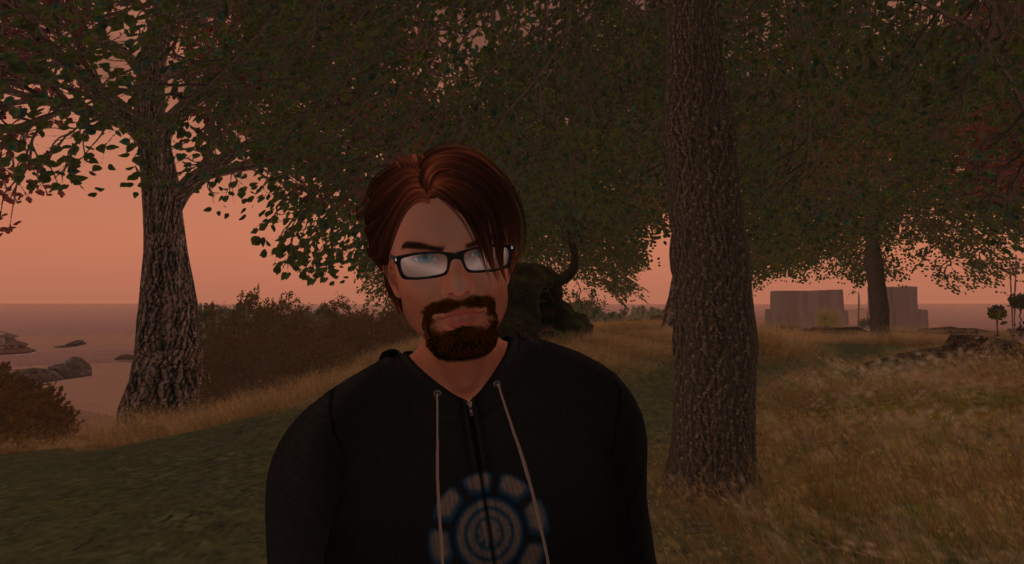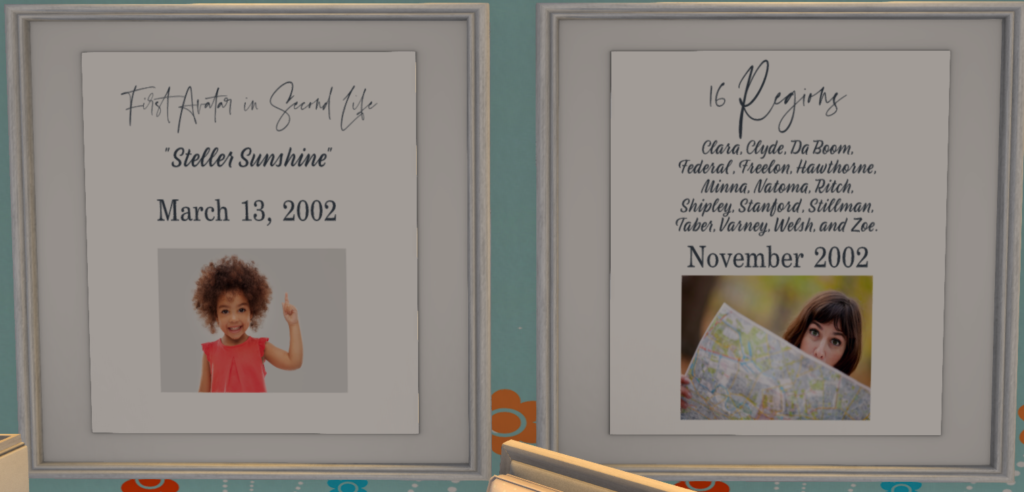Second Life – The Hobby I Never Talk About
I talk about a lot of my hobbies, and I have a lot of them, mostly revolving around the digital realm. I have one hobby that I really never discuss, It’s been one of my longest-running interests too. That’s Second Life, the online virtual world. I sometimes abandon it for a while but I always come back to it eventually. I don’t think it’s technically the first, and it’s certainly not the only one, but it’s effectively the most “successful” virtual world. I think maybe, the most recent VR Chat is the only other one to actually have any sort of real staying power. Minecraft kind of counts too really.
The current term being tossed around for this is “Metaverse”. I think technically the current use of “Metaverse” is a bit different, it’s more, the melding of the virtual and real world. The weird thing is, if you lean too much into that concept, the metaverse is literally just, “the internet”. And it already does it better than anything with a 3D avatar-based world would ever do. The original use of the term Metaverse though predates Facebook’s coopting of the term and Ready Player One’s boring popularization of the concept.
The original vision of what a Metaverse is, was basically a 3D mirror of real life, but cool and fantastical. Originally from the 1992 novel Snow Crash, one of my favorite books, highly recommended. The book takes place in a dystopian cyberpunk future where corporations basically run everything in the real world. But people can escape to this virtual user-run environment called the Metaverse. Second Life is explicitly based on this concept, per the creators. In Snow Crash, the entire Metaverse is connected and exists on a sort of “virtual planet”. Most of the world exists in a centralized point near a highway that circumnavigates the world. Think, a digital version of the Las Vegas Strip.
My point here is more that, Zuckerberg and Facebook, did not invent the Metaverse. And while it’s the same basic idea, Ready Player One did not invent the concept of the Metaverse. Snow Crash is an infinitely better book than the series of nostalgia lists that is Ready Player One. Ready Player One is like the McDonald’s of Metaverse concepts and frankly, I kind of hate it.
The key with Snow Crash’s world was that, like Second Life, it was all user-created. People ran elaborate clubs and had fancy apartments all customized up to their needs. It was slick and cool and embodied the idea of a virtual utopia space. There was even an interesting concept around the idea of people who were hardcore into it having elaborate and detailed custom avatars while casual folks would use some sort of basic default, and super casual folks had essentially a static image crappy avatar. Which sort of translates well into how Second Life’s avatars work. Because there are some defaults offered by Linden Lab, but to really show off your own personality, it’s best to spend a bit on your own customizations, or even just, do it yourself, because you can edit your avatar’s shape and make your own clothing and hairs and skins and attachable body part alternatives if you’d like. You can be a giant wolfman or dragon if you want, you can be a techno samurai ninja, you can be a tiny cartoon cat, you can be a regular normal-looking cat. You can literally be, whatever you want, with enough skill, or for a bit of money to another user who has enough skill.
It’s all part of what keeps me coming back. I am not even particularly social in world. I think mostly I like the idea of what it represents. And I like seeing everything people do and create in world. I think this is a lot of why it manages to succeed where a lot of other “Metaverse” attempts fail. It’s extremely open in it’s creation. There is a quote from someone I can’t remember that is something like, “Second Life is a creation tool with a chat engine strapped on.” I am pretty sure I butchered that but that’s the gist of it. It’s better to mention other games and virtual worlds maybe for comparison. Like Meta Horizons, the one pushed by Facebook. I admit, I have not used it, I don’t have a VR headset and frankly, it just doesn’t interest me much. From what I can tell, it’s a sterile money-driven platform. Do people even get places to build things in world? Can anyone create a plot of virtual space for others to visit? Can you just freely trade items and objects and clothing, or is it forced to go through a marketplace where Facebook can skim a cut?
Or something like Fortnite and Roblox, which are kind of, super-gamified virtual worlds. Roblox is a bit better I think, but Fortnite has pretty limited options for creation, limited to placing objects on a gridded space. I have seen a lot of cleverly built things in Fortnite, but it’s not quite as robust. Also, everything exists in separate spaces. Second Life kind of does this with private regions, but the regions are connected. With a large enough draw distance you can see other nearby regions, even across the dead space ocean. It also has one thing I don’t think any other virtual world has, the Mainland.
The Mainland, which is increasingly expanding and connected, thanks to Linden Lab’s efforts and the addition of the Belisaria continents for better user homes. You can start at the upper edge of the Heterocera continent, and walk, fly, or travel in some sort of vehicle, and cross probably a thousand regions going down through Sansara, and Belisaria, and back up across to the eastern tip of Gaeta V. This doesn’t
It’s a very unique experience, and despite that it’s incredibly buggy at times, it works. It’s probably the largest world in any “game”. And it’s covered in user-generated content. Linden Lab has some “official” areas, maintained by the Moles, employees of LL who take care of the world, but for the most part, it’s all user-generated and created. It makes for a very, hodgepodge experience. It really leans into the idea that it’s a world where anyone can be or do what they want. This doesn’t even get into the thousands of user-owned private regions scattered around the space surrounding the mainland. There are a total of 27777 regions as of this writing, 9400 of them owned by Linden Lab (the Mainland). You could never see them all even if you tried. Actually, you definitely couldn’t because many are restricted access and private.
I have never owned a private region myself, though I have run some private regions on OpenSIM off and on (OpenSIM is an open-source, SL-compatible self-hosted clone). It’s much too expensive for me to afford, but I have owned land pretty consistently for a few years. The nice thing is that it’s easy to move. Want to live near a road? Want to live near an ocean? Want to live on a mountain, it’s very easy to sell or abandon your plot and move elsewhere. I like to change up what’s on my land as well. I’ve had a variety of different homes, a few different space stations up in the sky, a shop with a skatepark, a simple little public space park, and for a bit a little medieval castle. That’s just, all part of the beauty of this, is that I can build whatever I want. It doesn’t even have to be a functional place, it can just be some sort of crazy artsy build.
In the past, most building was done in-world with primitives, which are just, cubes that can be manipulated in a lot of ways (to make them not cubes.) These days most building is done outside of the world in 3D software like Blender, to make mesh 3D models. They look much much nicer and are way more efficient from a land impact perspective.
There is also scripting, which I’ve gotten fairly good at. Second Life has it’s own coding language called Linden Scripting Language that can be used to make stuff happen with hooks into most every aspect of the world that can be coded up and manipulated. I’ve scripted up fancy vendors, and little games, and manipulatable props with doors and lids, and a few utility HUDs that mostly deliver information to the user. There is quite a bit needed to get really good at manipulating the world and building, but there is no shortage of people willing to help.
Which is another thing I just love about the world. For the most part, everyone is very friendly. I mentioned, in general, I’m not the most sociable person, but I do occasionally socialize. I like to visit building classes at Builder’s Brewery, for example. I also have joined several help groups, so I can chime in and assist others when needed when I’m online. Everyone is also just, very open and accepting of everything and everyone. You rarely see real arguments about anything going on, unless someone is spamming or being rude.
All of this is just a pile of reasons why I think Second Life has managed to last for 20+ years now. All of these latest pushes into the Metaverse just feel very sterile and corporate.
Josh Miller aka “Ramen Junkie”. I write about my various hobbies here. Mostly coding, photography, and music. Sometimes I just write about life in general. I also post sometimes about toy collecting and video games at Lameazoid.com.


